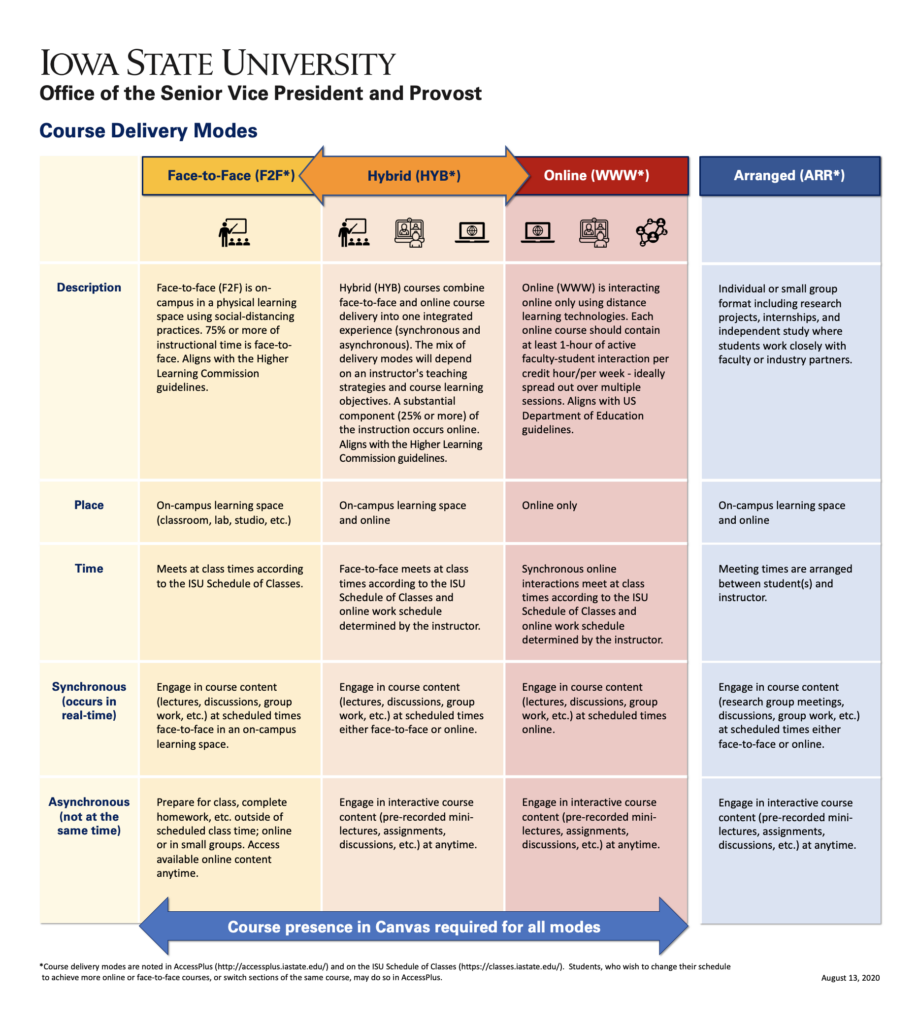Course Delivery
Course delivery modes (vary according to course type, pedagogical model, and enrollment) can be defined by the integration of technology and the amount of synchronous (real-time) interaction between the instructor and students, with traditional, face-to-face (in-person) courses on one end of the continuum and entirely online, asynchronous courses on the other end. The course learning objectives remain the same regardless of the delivery mode selected.
The question is how best to accomplish these goals, given what we know about how people learn. Although there is no “one size fits all,” the technologies and teaching strategies available today. We hope the resources in this section of our website will help you to answer this question.
Course delivery modes. The Academic Continuity Working Group and CELT published a guide that outlines the characteristics of face-to-face, online, and hybrid course delivery modes, download the Iowa State University Course Delivery Modes (PDF).
On-campus in a physical learning space using social-distancing practices. 75% or more of instructional time is face-to-face. Aligns with the Higher Learning Commission guidelines.
Hybrid courses combine face-to-face and online course delivery into one integrated experience (synchronous and asynchronous). The mix of delivery modes will depend on an instructor’s teaching strategies and course learning objectives. A substantial component (25% or more) of the instruction occurs online. Aligns with the Higher Learning Commission guidelines.
Interact online only using distance learning technologies. Each online course should contain at least 1-hour of active faculty-student interaction per credit hour/per week – ideally spread out over multiple sessions. Aligns with US Department of Education guidelines.
